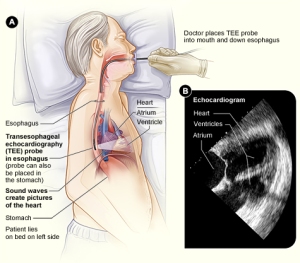Bariatric Surgery Lowers the Risk of Atrial Fibrillation
I’m not sure how much this applies to endurance athletes, but I found this interesting. As, I think, everyday knows, obesity increases the risk of cardiovascular disease, and that includes atrial fibrillation. Researchers in Sweden recently published a study where they followed 4200 obese individuals with normal sinus rhythm (ie. not in a fib at the beginning of the study) for an average of nineteen years. During that period approximately half of the subjects had had bariatric surgery – basically various surgical procedures to rearrange the internal organs to force the patient to eat less and absorb less resulting in significant, life-changing weight loss.
The study found that 12.4% in the surgery/weight loss group experienced atrial fibrillation compared to 16.8% in the non-surgical/still obese group. That’s a 29% lower rate of developing atrial fibrillation for the surgery/weight loss group. Furthermore the study also concluded that, “Compared with usual care, weight loss through bariatric surgery reduced the risk of atrial fibrillation among persons being treated for severe obesity. The risk reduction was more apparent in younger people and in those with higher blood pressure.”
(Citation is HERE)
Other studies have shown that weight loss can be helpful in reversing atrial fibrillation and that ablation success rate is improved with weight control. I don’t have literature citations but I read this here.
So what does this have to do with endurance athletes with A fib? All endurance athletes are already thin, right? Well, obviously that isn’t true; but probably very few endurance athletes would meet the criteria for bariatric surgery. So we should be in the low risk group to begin with – so why do so many endurance athletes end up in a fib?
Well, as everybody knows distant runners and other endurance athletes often gain weight when they have to quit or reduce exercises because of, say, atrial fibrillation. These studies suggest better outcomes with weight control regardless of method.
As to why endurance athletes have a higher rate of A fib – I’ll address that in next weeks post.
Thanks for reading – please feel free to post comments below.






















